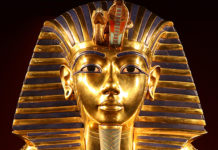Inferring occupation from archaeological skeletons using certain methods and techniques can provide an interesting mixed set of results.
The question of occupation and what can be inferred from an archaeological skeleton is a widely researched area. The subject involves many arguments on whether it’s possible to infer the activities of an individual from markers on the skeleton.
Occupation From the Skeleton
Comparison of articles from different authors makes it clear that a precise and collaborated opinion on whether an individual’s occupation can be accurately determined from skeletal remains does not exist. The problem is that there have been many responses to this question ranging from the definite pinpointing of activity or occupation in relation to joint disease, and to the total disregard for any link between occupational markers on the skeleton to certain activities.
Evidence on Archaeological Skeletons
The main areas that seem to be discussed in regard to the question of occupation are:
- Debates over osteoarthritis, which is a disease in life that affects certain joints in the skeleton
- Musculoskeletal markers, or marks left on the skeleton where muscles were attached to certain bones
- Bone robusticity – difference to the “normal” markers on the skeleton, in relation to how robust certain muscle attachments on certain bones
- Dental modification, or changes to the teeth from certain activities
What Does This All Tell Archaeologists?
Looking at this evidence when studying an archaeological skeleton can provide answers to the possible occupation of individuals in the past. However, it is clear that there is an underlying issue with any idea of activity patterning seen on the skeleton, and that is the problem regarding age – more specifically old age of the individual.
It seems to be easy to pin occupation as a reason for osteoarthritis, however this almost seems too easy. As there are many other factors such as old age, that are more likely to affect the onset of osteoarthritis, it would not be a viable conclusion. Characteristic abrasions seen on teeth could be a useful indicator, but only if comparable data was available that could help pinpoint a certain activity and thus an occupation. Even if this was available, it would be difficult to deduce the occupation of the individual and pin it down to a specific activity by teeth alone.
Ancient Skeletal Population Studies
There does seem hope with population or group studies, and seeing correlations between these markers on individual skeletons within the collection of skeletons, such as from a cemetery. If there is a clear sign among a group of skeletons, then this would lead be a more reliable answer about occupations of the group as a whole.
Further Studies In Occupation
Even if markers on the skeleton could be defined to a specific activity, it may not be possible to say for sure if he or she was an archer, corn grinder or even a weaver. It is reasonable that we want to try and extract as much information about past societies as possible, but at the same time we need to be careful to go about it the right way. Overall though, there is a need for further study into finding comparable modern data, and learning how activities affect the body, more specifically the skeleton, so that evidence from the skeleton can be looked at in relation to occupation. A firm understanding of how the activities of the past and the affect on the body are needed, in order to comfortably deduce occupation from the skeleton.
References:
- Knusel, C. (2000) “Bone adaption and its relationship to physical activity in the past.” In: Cox, M. & Mays, S. (Eds.) Human Osteology: In Archaeology and Forensic Science. Greenwich Medical Media.
- Kennedy, K. (1989) “Skeletal Markers of Occupational Stress.” In Iscan, M. Y. & Kennedy, K. (Eds.) Reconstruction of Life from the Skeleton. Wiley-Liss.
- Larsen, C. (1997) Bioarchaeology: Interpreting behavior from the human skeleton, Cambridge University Press.
- Stirland, A. J. (1998) “Musculoskeletal evidence for activity: Problems of evaluation.” International Journal of Osteoarchaeology, 8, 354-362.
- Turner, G. & Anderson, T. (2003) “Marked occupational dental abrasion from medieval Kent.” International Journal of Osteoarchaeology, 13, 168-172.








